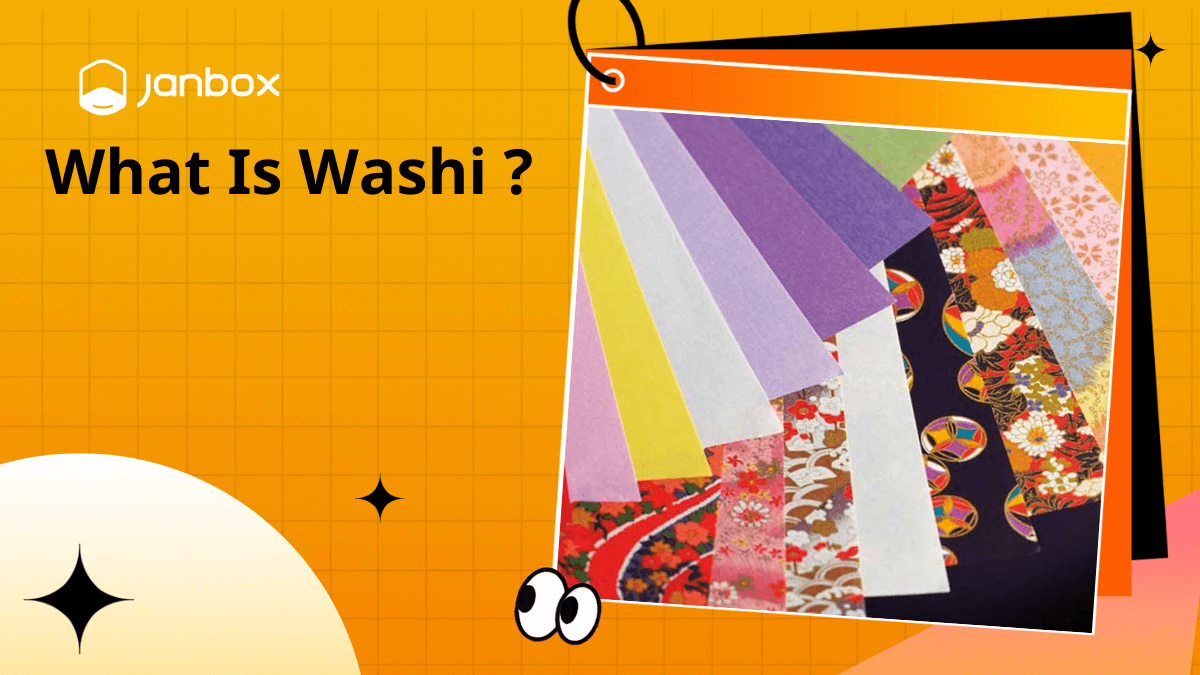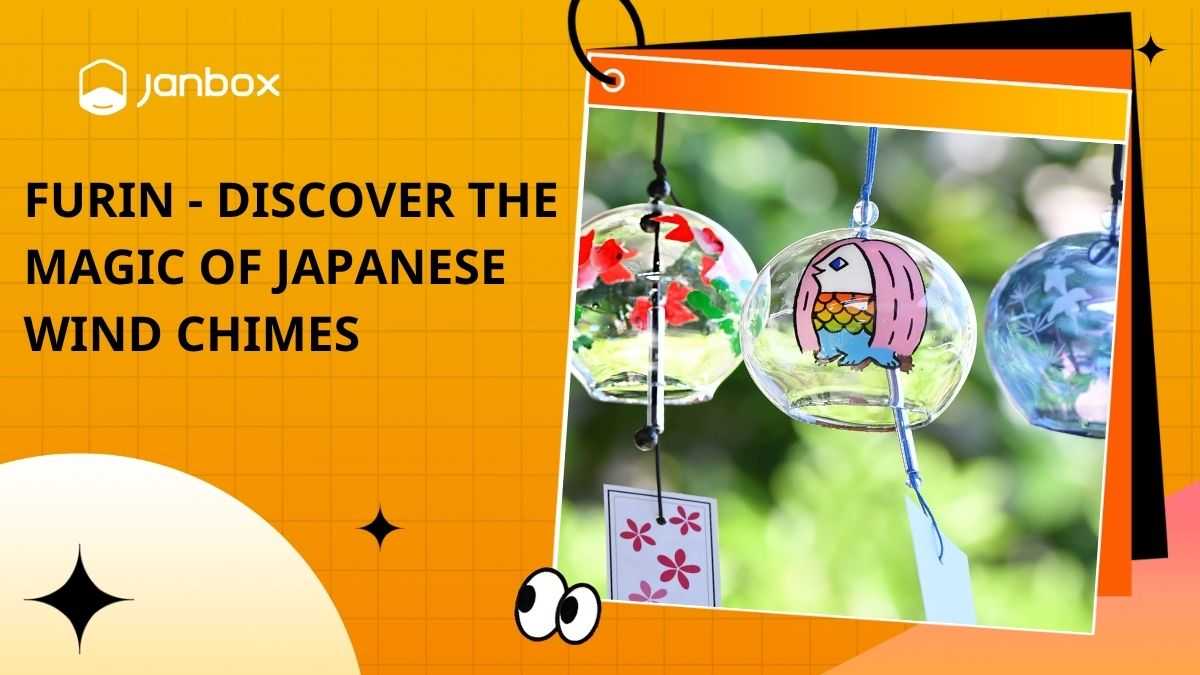Washi is a traditional Japanese paper admired for its beauty, durability, and cultural significance. Deeply rooted in Japan’s history, washi has been used for centuries in art, design, and everyday life. From ancient temples to modern craft studios, this unique paper continues to inspire with its timeless appeal. In this article, we’ll uncover the essentials of washi – what it is, how it’s made, its different types, and how you can experience or buy authentic washi paper today.
1. What is Washi?
The word washi (和紙) combines “和” (wa) meaning “Japanese” and “紙” (shi) meaning “paper,” thus literally “Japanese paper.” More than a name, it reflects over 1,300 years of tradition and artistry. Washi paper is handmade from plant fibers like kozo, mitsumata, and gampi, giving it a soft yet durable texture unlike Western wood pulp paper.
Introduced from China in the 7th century, papermaking quickly took on a uniquely Japanese character, deeply tied to culture, aesthetics, and everyday life – from calligraphy and books to screens and rituals. In 2014, UNESCO honored three washi types – Honminoshi, Sekishu Banshi, and Hosokawa-shi – as Intangible Cultural Heritage, recognizing washi’s enduring cultural value worldwide.
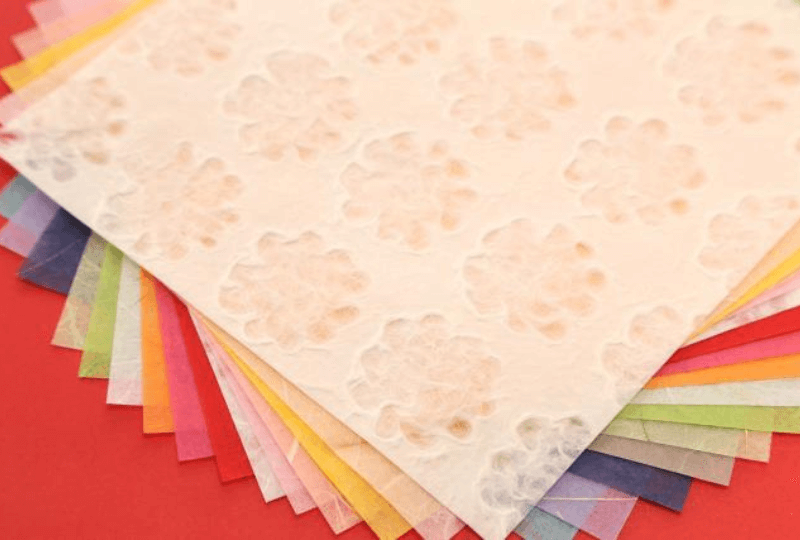
2. Traditional Craftsmanship: How Washi is Made
The traditional process of making washi is entirely handcrafted and can take weeks to complete. Here are the essential steps:
Step 1: Harvesting the Bark
- The inner bark of kozo, mitsumata, or gampi is harvested during winter, when the fibers are strongest.
- The bark is steamed and stripped from the branches.
Step 2: Boiling and Cleaning
- The bark is boiled in an alkaline solution to soften the fibers.
- Artisans hand-pick impurities to ensure clean, pure pulp.
Step 3: Beating the Fibers
- The cleaned bark is beaten with wooden mallets to separate the fibers into a soft, fluffy pulp.
Step 4: Mixing with Water and Neri
- The pulp is mixed with cold water and neri (a natural viscous substance from tororo-aoi) to help fibers suspend evenly.
Step 5: Sheet Forming (Nagashi-zuki)
- Using a bamboo screen, the artisan scoops and rocks the pulp mixture in layers.
- This step forms thin, strong, and even sheets of washi.
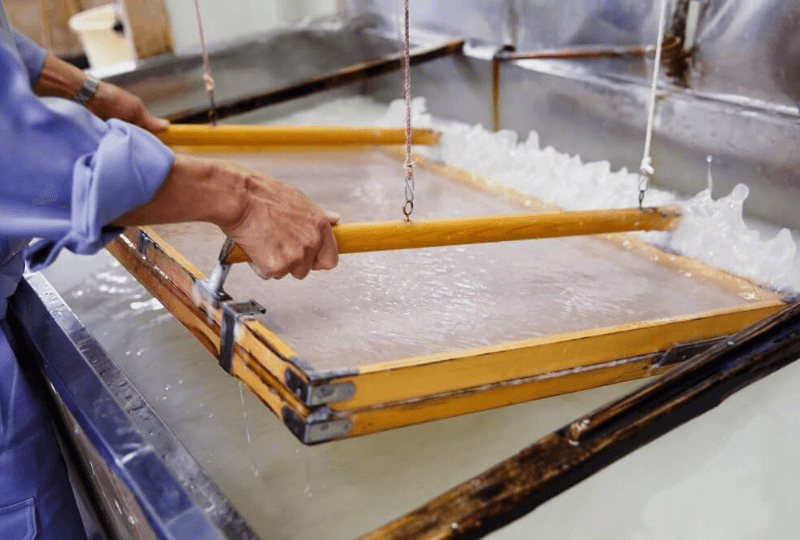
Step 6: Pressing and Drying
- The sheets are pressed to remove excess water.
- Traditionally, they are dried on wooden boards under the sun.
This delicate process requires not only skill but harmony with nature – reflecting the heart of Japanese craftsmanship.
>>> Read more: Origami Paper Types: 6 Best Options And What To Consider When Buying
3. Exploring Different Types of Washi Paper
Washi paper comes in many varieties, each reflecting the plant fiber it’s made from, the region where it’s produced, and the specific techniques of local artisans. Among the most well-known are Ganpishi, Kozogami, and Mitsumata – each with its own texture, strength, and traditional uses. Understanding the characteristics of these washi types not only reveals the versatility of Japanese paper, but also deepens appreciation for the delicate balance between nature and craft in every sheet.
3.1 Ganpishi
Ganpishi is made from the fibers of the wild-growing gampi plant. It is considered the most luxurious and naturally refined type of washi. The paper has a smooth, glossy finish, with a slight translucency and a silken feel. Its fibers are extremely fine and short, which makes the paper resistant to insects, aging, and moisture – ideal for archival use.
Because gampi is difficult to cultivate, ganpishi is rarer and more expensive than other types of washi. Historically, it was highly valued by nobility and artists for calligraphy, printing woodblock illustrations (ukiyo-e), and mounting artwork. Today, ganpishi remains a favorite in bookbinding, conservation, and fine printmaking, especially when clarity and detail are essential. Its natural sheen and durability make it not only functional but aesthetically exceptional.
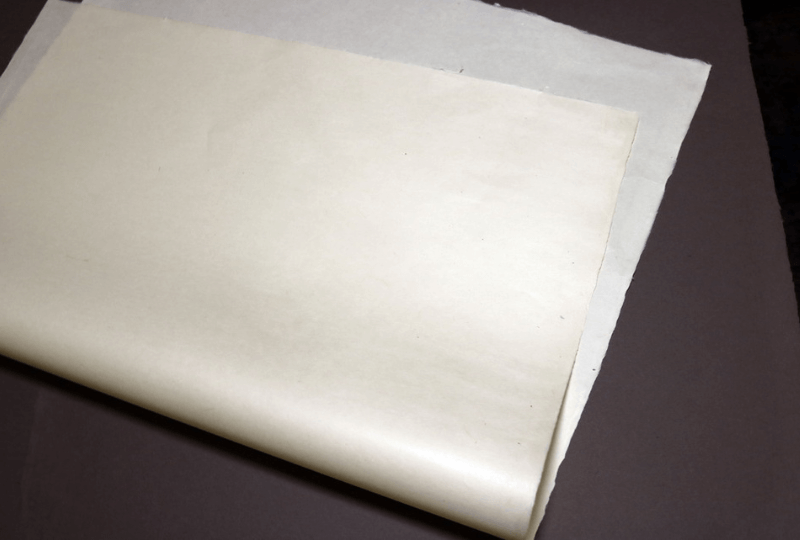
3.2 Kozogami
Kozogami is the most common and widely produced type of washi, made from the inner bark of the kozo (mulberry) plant. Kozo fibers are long, strong, and flexible, resulting in a paper that is exceptionally durable and tear-resistant – often referred to as the “workhorse” of washi types.
Kozo paper has a soft, textured surface with visible fibers, giving it a warm, organic look. Its strength allows it to be crumpled, folded, and manipulated without losing integrity, which is why it’s ideal for origami, lamp-making, conservation, and interior design. The paper also absorbs ink beautifully, making it suitable for traditional brush painting and printmaking.
Artisans across Japan continue to produce kozogami using regional variations, making it one of the most versatile and widely appreciated forms of washi. For beginners and professionals alike, kozo paper offers an ideal balance of functionality, strength, and natural beauty.
3.3 Mitsumata
Mitsumata washi is made from the mitsumata shrub, known for producing soft, smooth, and supple paper. The fibers of mitsumata are shorter and finer than kozo, giving the paper a slightly glossy, elegant finish. It is less translucent than ganpishi and not as rugged as kozogami, making it a perfect choice for refined applications.
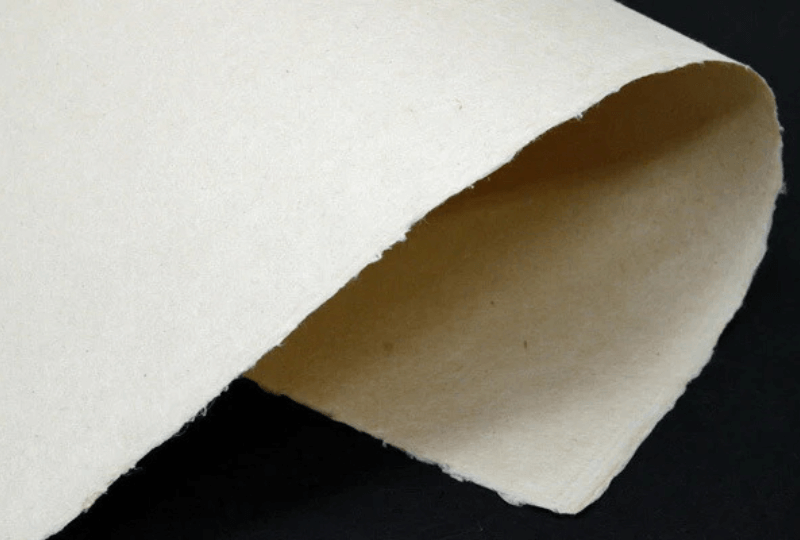
Historically, mitsumata was prized for official documents, certificates, and even currency printing in Japan due to its natural strength and fine texture. Today, it is favored in high-end stationery, traditional painting (nihonga), and luxury packaging.
Compared to kozo, mitsumata requires more care in cultivation and processing, which contributes to its higher cost. However, its tactile quality and visual elegance continue to make mitsumata a preferred paper among artisans who seek a refined balance of durability, softness, and sophistication.
>>> Read more: Explore Japanese Hand Fans: Tradition Meets Modern Style
4. Applications of Washi: Traditional and Modern
Washi paper’s beauty lies not only in its craftsmanship, but also in its remarkable versatility. For centuries, washi has been a vital part of daily life, religious practice, and artistic expression in Japan. Today, it continues to evolve, bridging tradition and innovation across various industries around the world.
4.1 Traditional Uses
In historical Japan, washi was more than just writing material. It was used for calligraphy scrolls, Buddhist scriptures, woodblock printing (ukiyo-e), origami, and ceremonial items. Washi’s durability and lightness made it ideal for fusuma (sliding doors) and shoji (paper screens), which created flexible, breathable architecture in traditional homes and temples. It was also used in lanterns, umbrellas, and even clothing linings, showcasing its role in both functional and decorative design.
4.2 Modern Applications
In contemporary contexts, washi continues to inspire. Artists and designers use it in mixed-media art, packaging design, fashion, and interior décor. One popular evolution is washi tape—colorful, patterned adhesive tape used in crafts and journaling. Washi is also used in digital printing, luxury stationery, bookbinding, and conservation, especially for restoring rare manuscripts due to its strength and acid-free nature. Today, washi stands as a symbol of elegance, craftsmanship, and ecological harmony in both traditional and modern creativity.
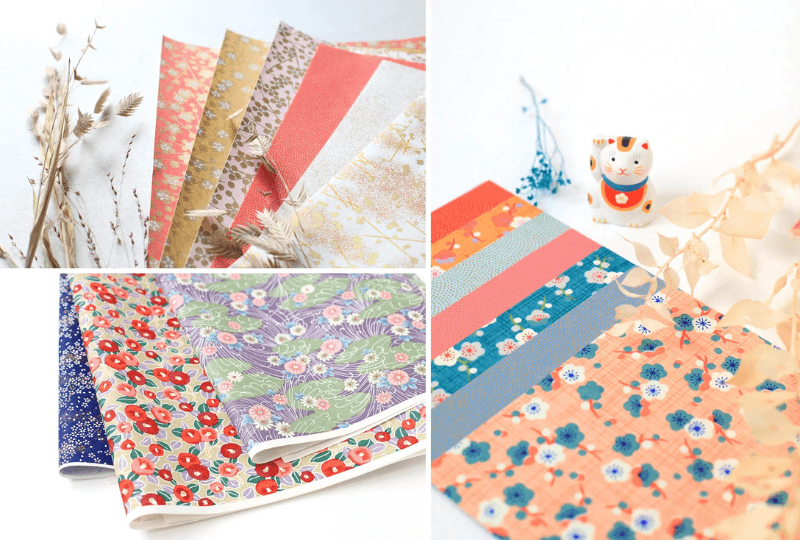
5. Shop Authentic Washi Paper Easily with Janbox
Buying authentic washi paper from Japan has never been easier – especially with Janbox, a trusted Japanese proxy shopping platform. While washi is widely available online, it’s important to be cautious of cheap imitations that often lack the texture, durability, and craftsmanship of genuine washi made by Japanese artisans. If you find washi paper sold at unusually low prices, it could be a sign of a counterfeit or low-quality item that may not deliver the traditional look or feel you’re seeking.
To avoid this, purchasing through a reputable service like Janbox is a smart choice. Janbox connects directly to Japan’s top e-commerce sites like Rakuten, Yahoo! Shopping, Mercari, and Amazon Japan, giving you access to thousands of washi paper products made for the Japanese domestic market.
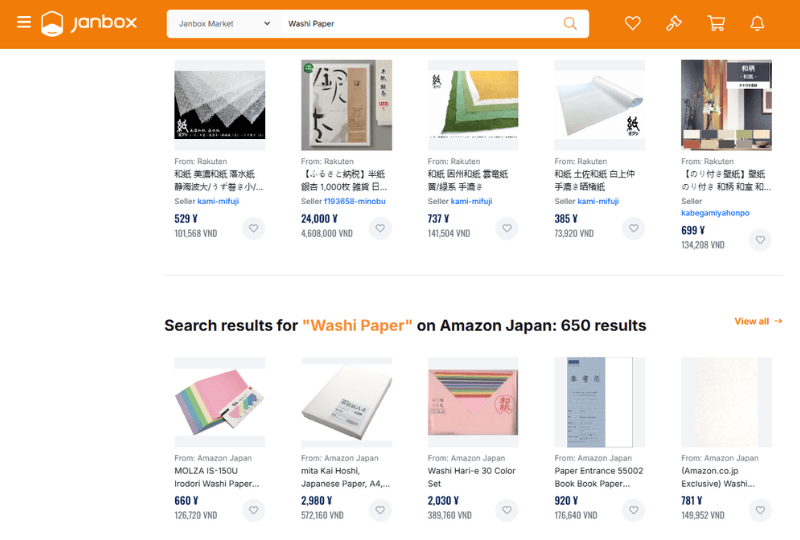
Here’s how to shop authentic washi paper with Janbox:
- Step 1: Go to Janbox.com or download the Janbox app. Create an account or log in.
- Step 2: Type “Washi Paper” in the search bar and browse a wide selection of designs and brands.
- Step 3: Review the product details: price, origin, paper type, texture, seller ratings, and customer feedback.
- Step 4: Place your order and make the first payment (product price + proxy fee).
- Step 5: Janbox will purchase the item on your behalf. Once it’s ready for shipping, you’ll be notified to make the second payment (shipping + any applicable service fee).
- Step 6: Sit back and relax – Janbox will deliver your washi paper quickly and reliably, right to your door.
With Janbox, not only do you get authenticity and convenience, but you also support Japanese craftsmanship by accessing genuine, high-quality washi products straight from their source.
>>> Read more: How To Buy From Mercari Japan with Janbox Proxy Service
6. Conclusion
Washi paper is a timeless symbol of Japanese craftsmanship, blending natural beauty with durability. From traditional calligraphy to modern design, it continues to inspire artists and creators around the world. By choosing authentic washi – especially through trusted platforms like Janbox – you support skilled artisans and preserve a meaningful cultural legacy. More than just paper, washi represents heritage, artistry, and a deep connection to nature. Let it bring elegance and tradition into your creative journey.
Website: https://janbox.com
Email: [email protected]

